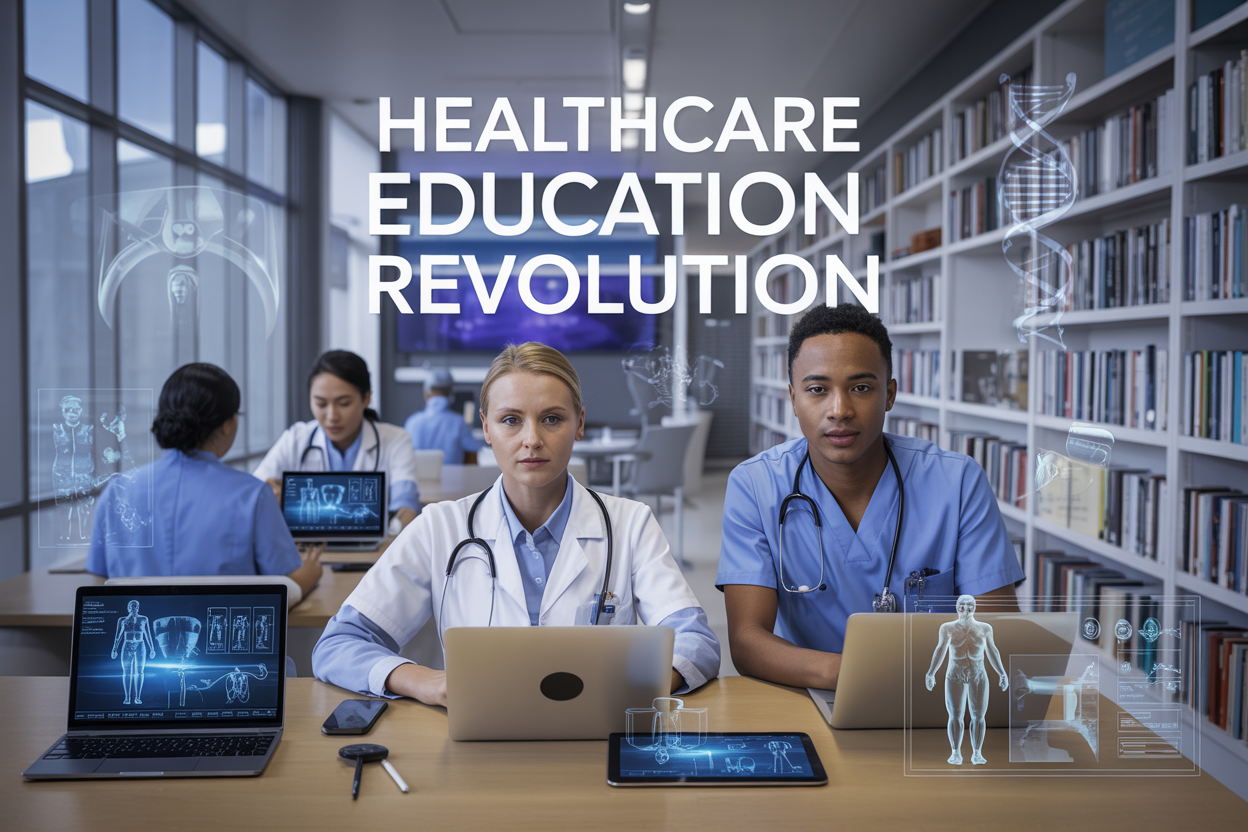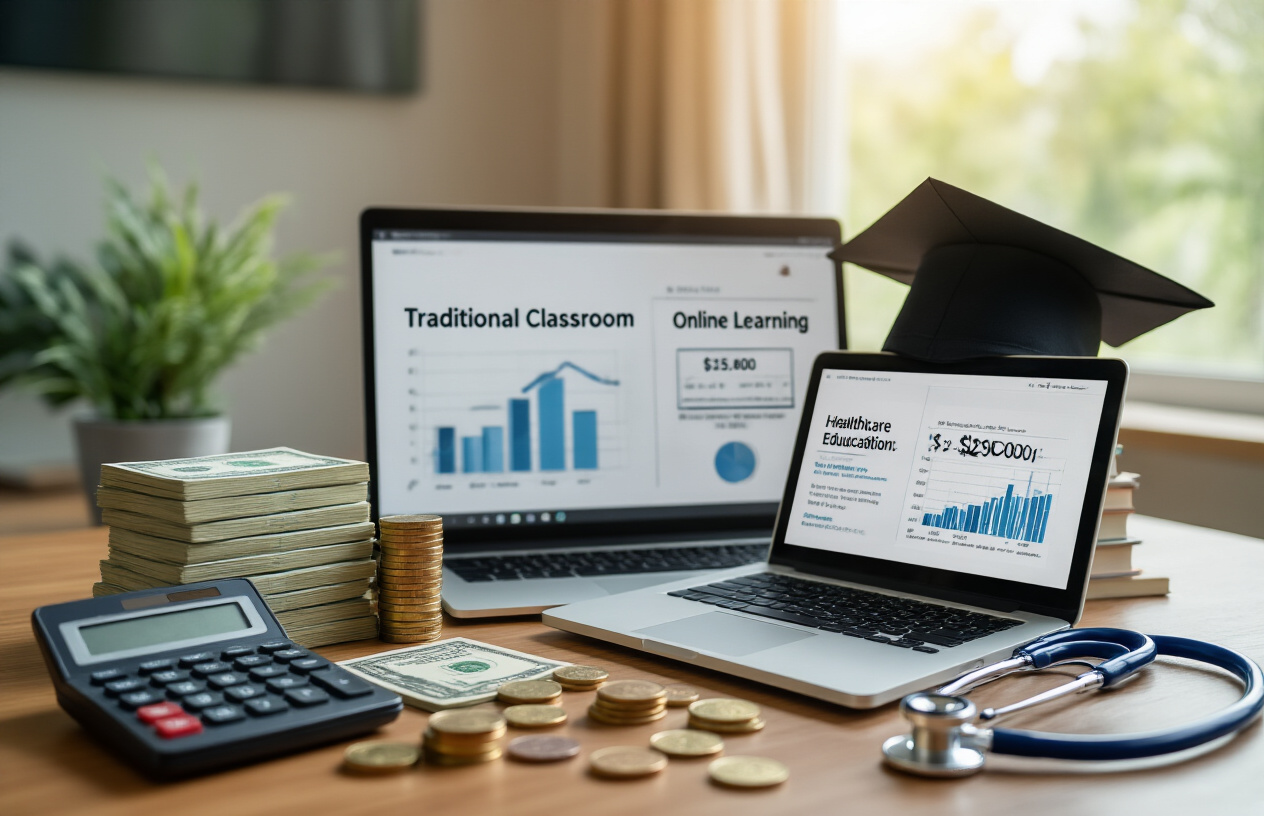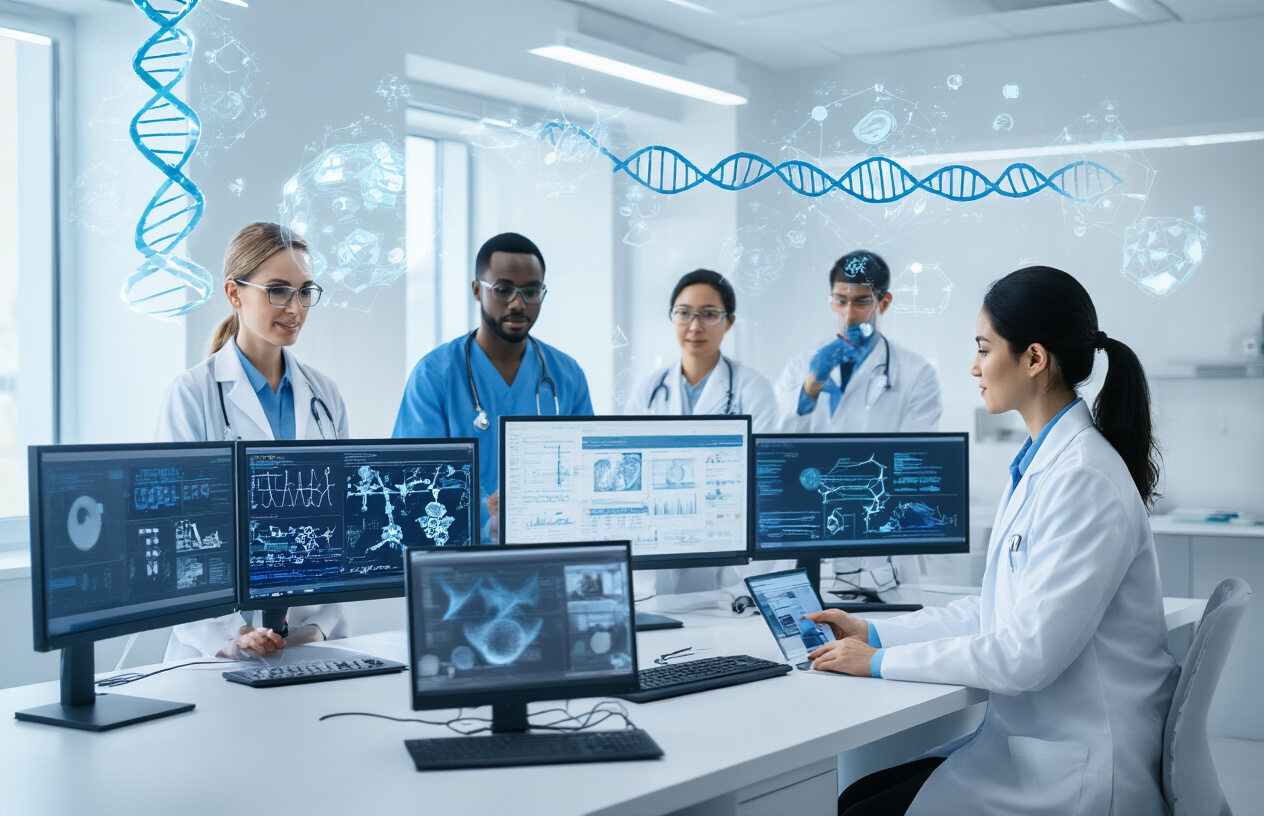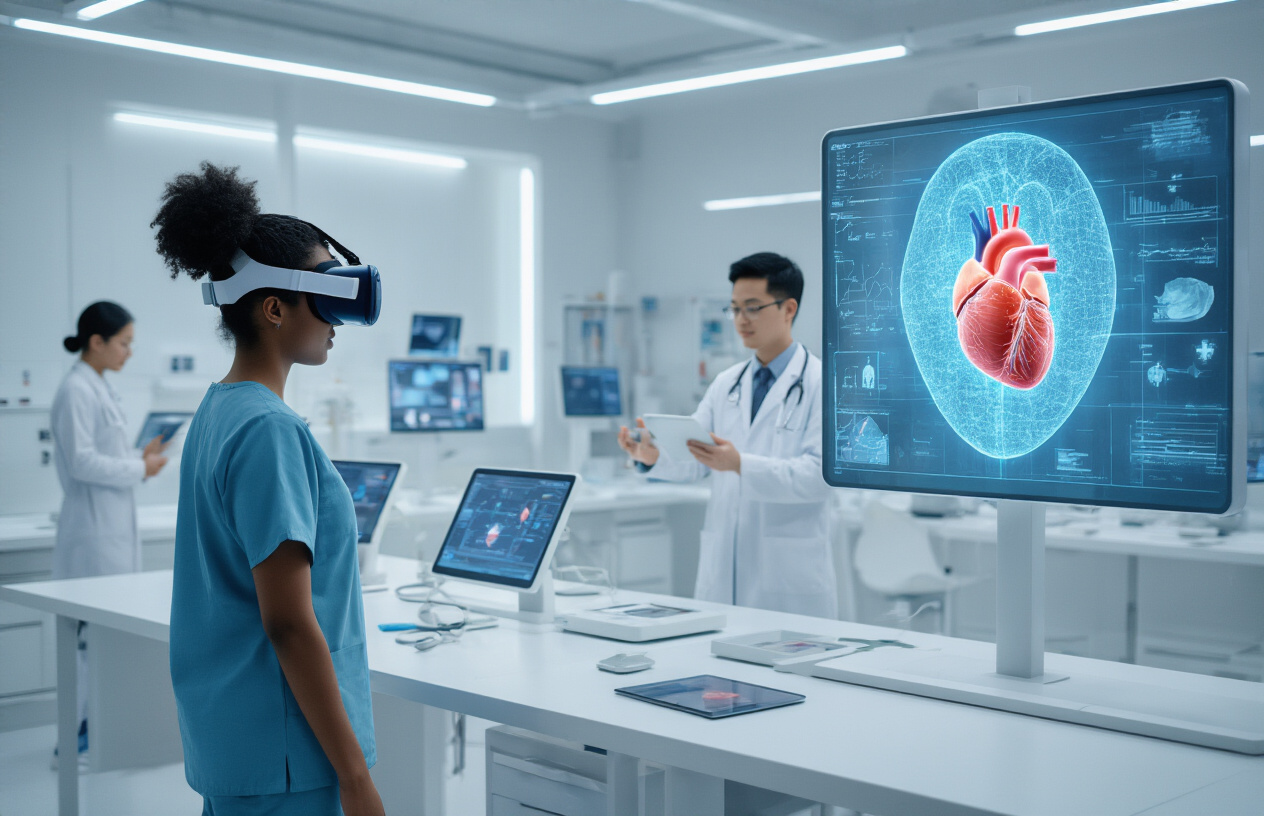
Healthcare professionals face a constant challenge: staying current with rapidly evolving medical knowledge while managing demanding schedules and tight budgets. Online learning healthcare with lifetime access medical courses offers a game-changing solution that’s reshaping how medical professionals advance their careers.
This approach to healthcare education future is designed for busy doctors, nurses, medical technicians, and other healthcare workers who need flexible medical training that fits their unpredictable schedules. Whether you’re a recent graduate or a seasoned professional, self-paced healthcare learning eliminates the barriers that traditional education creates.
We’ll explore how cost-effective medical training through lifetime access models saves you thousands compared to traditional continuing education. You’ll also discover how digital medical education keeps you ahead of the curve with real-time medical knowledge updates, ensuring your skills remain sharp in today’s fast-changing healthcare landscape. Finally, we’ll examine the technology-driven features that make online healthcare certification more effective than classroom-based alternatives.
The Growing Demand for Flexible Healthcare Education

Addressing the shortage of healthcare professionals worldwide
The global healthcare workforce shortage affects over 70% of countries worldwide, with projections showing a deficit of 18 million healthcare workers by 2030. Online learning healthcare platforms with flexible medical training options provide immediate solutions by removing geographical barriers and reducing training costs. These digital medical education systems enable rapid deployment of qualified professionals to areas experiencing critical shortages, while healthcare learning technology ensures consistent, standardized training across different regions and healthcare systems.
Meeting diverse learning schedules of working professionals
Healthcare professionals juggle demanding work schedules, family responsibilities, and continuing education requirements, making traditional classroom-based learning increasingly impractical. Self-paced healthcare learning through lifetime access medical courses allows nurses, doctors, and technicians to pursue continuing medical education online during their available hours. This flexibility enables healthcare professional development without compromising patient care responsibilities, with studies showing 40% higher completion rates compared to fixed-schedule programs when professionals can access training materials 24/7.
Expanding access to specialized medical training in underserved areas
Rural hospitals and clinics often lack access to specialized medical training due to geographical isolation and limited educational resources. Online healthcare certification programs bridge this gap by delivering expert-level instruction directly to underserved communities through cost-effective medical training models. Healthcare professionals in remote areas can now access the same quality education as their urban counterparts, with lifetime access ensuring continuous skill development and medical knowledge updates without expensive travel or extended time away from critical local healthcare services.
Cost-Effectiveness of Lifetime Access Learning Models

Eliminating recurring subscription fees for continuous education
Healthcare professionals typically spend thousands annually on continuing education subscriptions and course renewals. Lifetime access medical courses eliminate this financial burden by providing permanent access to comprehensive training materials for a single upfront payment. This model transforms ongoing educational expenses into a one-time investment, allowing medical professionals to access updated content, refresh critical knowledge, and pursue additional certifications without worrying about recurring fees that strain personal or institutional budgets.
Reducing travel and accommodation expenses for medical conferences
Traditional medical conferences require significant travel budgets, accommodation costs, and time away from practice. Online learning healthcare platforms with lifetime access deliver the same quality education directly to professionals’ preferred locations. Medical practitioners can access expert-led sessions, interactive workshops, and networking opportunities without expensive flights, hotel stays, or conference registration fees. This accessibility particularly benefits rural healthcare providers who face geographic barriers to quality continuing education opportunities.
Maximizing return on investment through unlimited course repetition
Cost-effective medical training reaches its peak value when professionals can revisit content multiple times without additional charges. Complex medical procedures, diagnostic techniques, and treatment protocols often require repeated study to achieve mastery. Lifetime access models allow healthcare professionals to review challenging concepts, refresh skills before performing procedures, and stay sharp on critical protocols. This unlimited repetition capability transforms a single purchase into years of educational value, making each dollar spent exponentially more valuable.
Lowering institutional overhead costs compared to traditional programs
Healthcare institutions face mounting pressure to provide comprehensive professional development while controlling costs. Digital medical education with lifetime access dramatically reduces administrative overhead compared to organizing in-person training programs. Hospitals and clinics eliminate venue rentals, catering expenses, instructor travel costs, and staff scheduling complications. Multiple team members can access the same training materials simultaneously, creating economies of scale that traditional classroom-based programs cannot match while ensuring consistent, standardized education across entire departments.
Staying Current with Rapidly Evolving Medical Knowledge

Instant updates to course content reflecting latest research findings
Medical breakthroughs happen daily, and traditional textbooks can’t keep pace. Online learning healthcare platforms with lifetime access medical courses automatically integrate new research findings, clinical trials, and evidence-based practices directly into existing modules. Healthcare professionals receive real-time notifications when content updates occur, ensuring their knowledge stays current without waiting for new editions or revised curricula.
Access to emerging treatment protocols and technologies
Digital medical education platforms provide immediate access to cutting-edge treatment methodologies, surgical techniques, and diagnostic technologies as they emerge. Students and practicing professionals can explore virtual reality simulations of new procedures, interactive case studies featuring novel therapies, and comprehensive modules on breakthrough medical devices. This instant access eliminates the traditional lag time between innovation and education, keeping healthcare providers at the forefront of patient care.
Continuous professional development without enrollment barriers
Lifetime access models remove the bureaucratic hurdles that often prevent healthcare professionals from pursuing continuing medical education online. Professionals can instantly dive into specialized training modules, earn certifications at their own pace, and revisit complex topics whenever needed. This flexibility supports career advancement and specialty transitions while maintaining full-time practice schedules, making healthcare professional development more accessible and sustainable.
Enhanced Learning Outcomes Through Self-Paced Education

Accommodating Different Learning Styles and Speeds
Self-paced healthcare learning recognizes that medical professionals absorb information differently. Visual learners benefit from interactive diagrams and medical imaging, while auditory learners prefer recorded lectures and case discussions. Kinesthetic learners engage with virtual simulations and hands-on modules. This flexible approach allows each healthcare professional to progress at their optimal pace, whether they need extra time for complex pharmacology concepts or can quickly master familiar topics. Online learning healthcare platforms adapt to individual needs, creating personalized educational experiences that traditional classroom settings cannot match.
Enabling Deep Mastery Through Unlimited Content Review
Lifetime access medical courses transform how healthcare professionals achieve mastery. Complex medical procedures, diagnostic techniques, and treatment protocols require repeated exposure for true comprehension. With unlimited content review, learners can revisit challenging material multiple times without additional costs or scheduling constraints. A nurse learning advanced cardiac monitoring can replay demonstration videos until confident in their skills. Physicians studying new surgical techniques can review procedures before performing them clinically. This repetition builds confidence and competence that single-exposure learning cannot provide.
Reducing Stress and Improving Knowledge Retention
Traditional time-pressured medical education creates anxiety that impairs learning. Self-paced healthcare learning eliminates artificial deadlines, allowing professionals to learn without stress. Research shows that relaxed learning environments improve knowledge retention by up to 40%. Healthcare workers juggling demanding schedules can study during their most alert periods, whether early morning or late evening. This stress-free approach leads to better comprehension and longer-lasting knowledge retention, directly impacting patient care quality. Medical professionals report higher satisfaction and engagement when learning at their preferred pace.
Allowing Focus on Challenging Concepts Without Time Pressure
Healthcare education covers vast, complex topics that require deep understanding. Self-paced learning removes time pressure, enabling professionals to spend extra attention on challenging concepts like molecular biology, advanced pharmacokinetics, or complex surgical procedures. A physical therapist can dedicate additional time to biomechanics while moving quickly through familiar anatomy. Emergency medicine physicians can focus intensively on rare condition management without rushing through content. This targeted approach ensures thorough understanding of critical medical concepts that directly impact patient safety and treatment outcomes.
Technology-Driven Features Revolutionizing Medical Education

Interactive simulations and virtual patient scenarios
Modern healthcare learning technology transforms traditional education through immersive virtual patient encounters. These simulations allow students to practice complex procedures, diagnose challenging cases, and make critical decisions in risk-free environments. Interactive scenarios replicate real-world clinical situations, from emergency room crises to surgical procedures, giving learners hands-on experience before treating actual patients. Students can repeat scenarios multiple times, exploring different treatment approaches and learning from mistakes without consequences.
AI-powered personalized learning pathways
Artificial intelligence revolutionizes self-paced healthcare learning by adapting content to individual strengths and weaknesses. Smart algorithms analyze student performance, identifying knowledge gaps and recommending targeted resources. These personalized pathways ensure medical professionals focus study time on areas needing improvement while accelerating through familiar concepts. AI tutors provide instant feedback, answer questions, and suggest additional practice materials based on learning patterns. This individualized approach maximizes retention and reduces study time compared to one-size-fits-all programs.
Mobile accessibility for learning during clinical rotations
Smartphone and tablet compatibility enables continuous education during busy clinical schedules. Medical students and practicing professionals access course materials, review procedures, and complete assessments between patient visits or during brief breaks. Mobile-optimized content includes downloadable lectures, quick reference guides, and interactive quizzes designed for short study sessions. This flexibility allows learners to maintain educational momentum even during demanding hospital rotations or emergency shifts, making online learning healthcare programs truly accessible.
Integration with electronic health records for practical application
Seamless EHR integration bridges the gap between theoretical knowledge and real-world practice. Students learn to navigate actual medical software systems, interpret patient data, and document procedures using industry-standard platforms. This hands-on experience with electronic health records prepares graduates for immediate workplace integration. Digital medical education platforms simulate authentic hospital workflows, teaching proper documentation procedures, medication ordering protocols, and patient communication standards that directly translate to professional settings.

Healthcare education is changing fast, and online learning with lifetime access is leading the charge. The demand for flexible learning options keeps growing as healthcare professionals juggle demanding schedules while trying to advance their careers. These platforms offer incredible value by eliminating the need for expensive recurring subscriptions, and they help medical professionals stay on top of the latest developments in their field without breaking the bank.
The self-paced nature of these programs means better learning outcomes since everyone can move at their own speed and revisit complex topics whenever needed. With cutting-edge technology features like virtual simulations and interactive modules, medical education is becoming more engaging and effective than ever before. If you’re a healthcare professional looking to grow your skills or advance your career, investing in online learning platforms with lifetime access could be one of the smartest moves you make. The future of medical education is here, and it’s designed around your success.
Author
-

Dr. Sunil Saini is a distinguished orthopedic surgeon with expertise in cosmetic limb lengthening, deformity correction, and Ilizarov surgery. With a career spanning over two decades, he has made significant contributions to the field of orthopedics, particularly in advanced limb lengthening techniques.
View all posts

